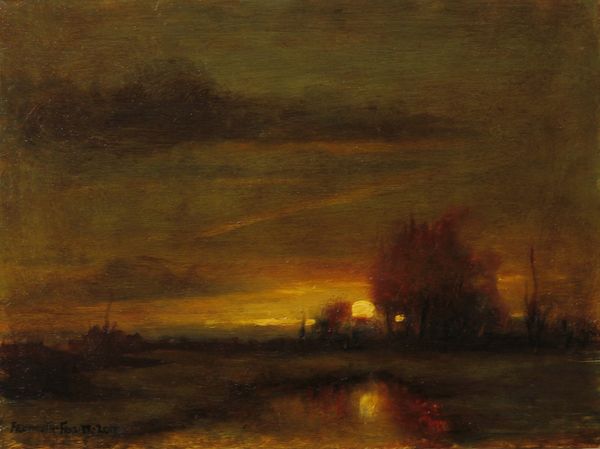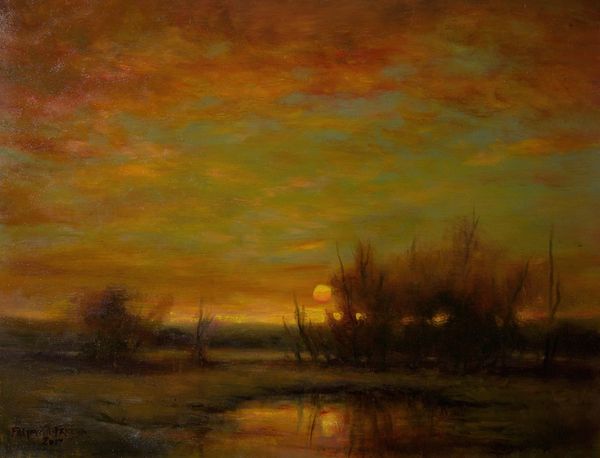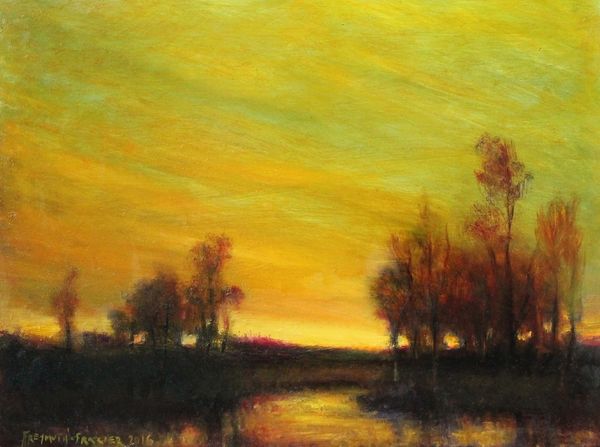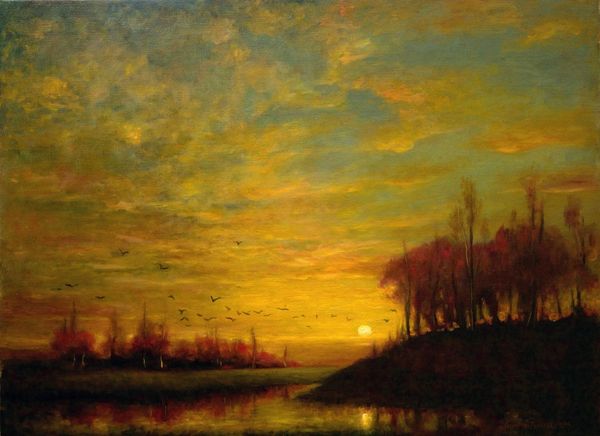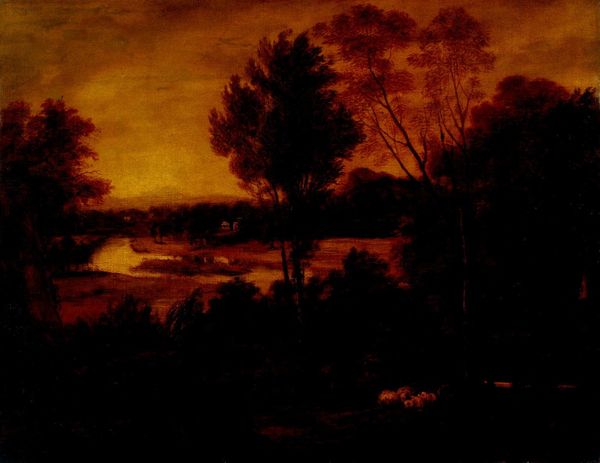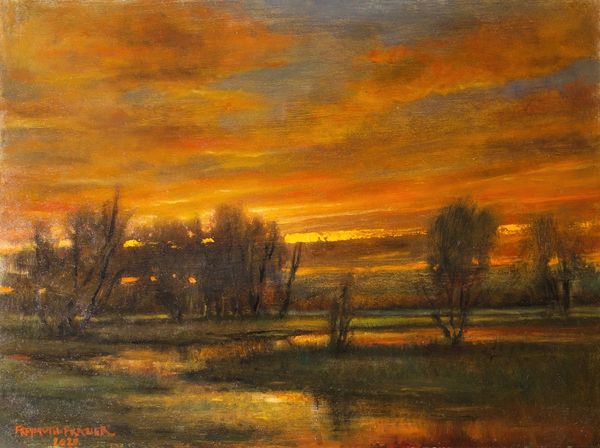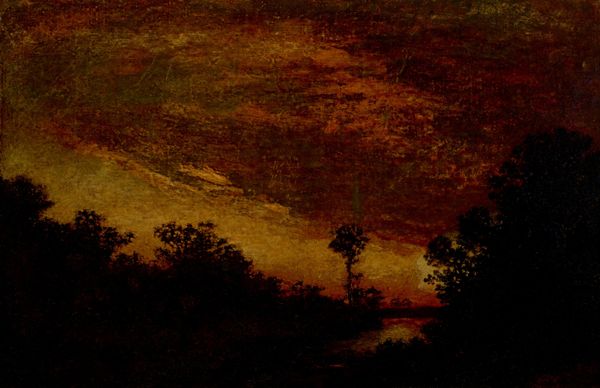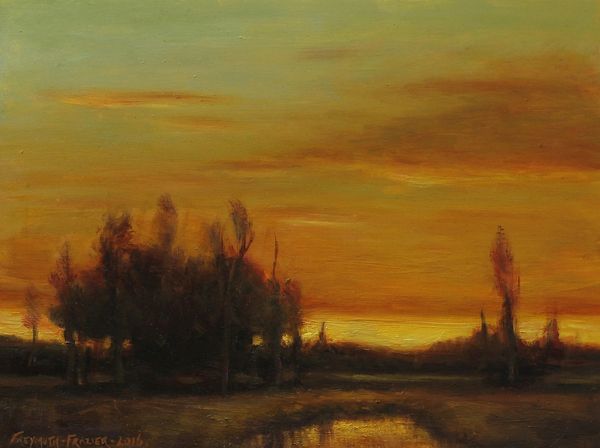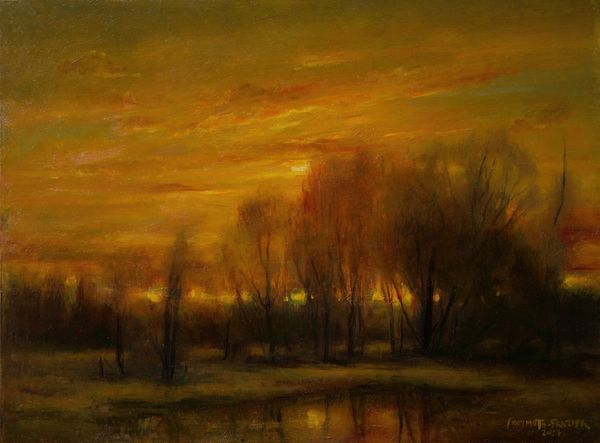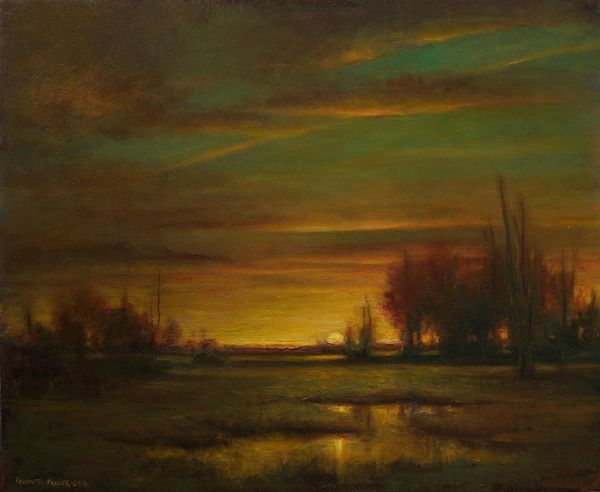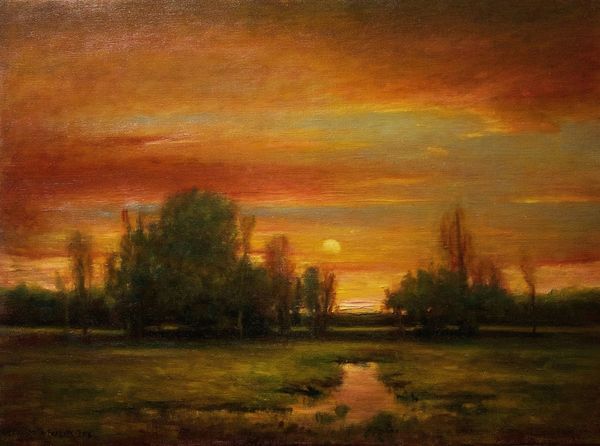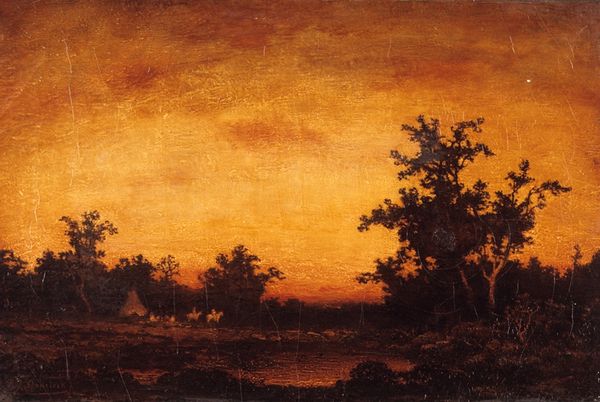
painting, oil-paint
#
night
#
painting
#
oil-paint
#
landscape
#
tonalism
#
romanticism
Copyright: Public domain
Editor: Here we have "Pond in Moonlight," an oil painting by Albert Pinkham Ryder. Its murky palette really gives me a feeling of unease. What do you see in this piece? Curator: Beyond the surface of a nocturnal landscape, I see Ryder engaging with late 19th-century anxieties around industrialization and its impact on the environment. This isn’t simply a scene, it’s a statement. Editor: A statement? In what way? It just seems like a dark landscape to me. Curator: Well, consider the tonalist style— the muted colors and emphasis on atmosphere. What might Ryder be suggesting by depicting nature in such a subdued, almost melancholic light? How does that contrast with the more bombastic, celebratory landscapes favored by some of his contemporaries? Editor: So, instead of celebrating the American landscape, he's critiquing something about it? Curator: Exactly! And perhaps critiquing more than just landscape. This period saw immense social upheaval, and artists were grappling with questions of identity and place. Could this "Pond in Moonlight" also be a commentary on the alienation and disillusionment felt by many during this rapidly changing era? What do you feel? Editor: I never thought about it that way before, but it makes sense! Seeing it as a reflection of social anxieties and a quiet protest changes everything. Curator: That’s the power of art. It's not just about what you see, but about the questions it forces us to ask about ourselves and the world around us. Editor: Thank you; I learned how historical and societal context influences even an unassuming dark painting.
Comments
No comments
Be the first to comment and join the conversation on the ultimate creative platform.
